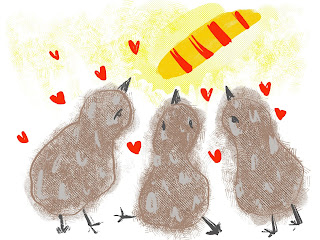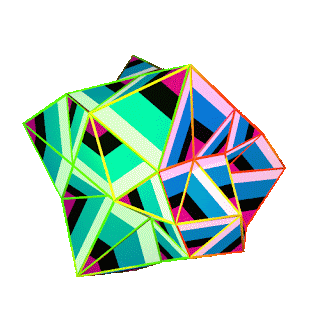The Big Beautiful Beak.
 |
| Art is about survival. |
There is some magical place where science and art can commune. The art speaks and the brain interprets. What if there was a way to get the brain to tell us the secrets of art: why we make it, what is its true value, what effect does it truly have on us both physiologically and emotionally?
This fella, Ramachandran was my favorite. I’d like to maybe have a cup of tea with him and have a little chat about neuroesthetics. Why not?
Anyway.
Ramachandran believes that the purpose of art can be understood by knowing its effect on the human brain. Why are some works of art so powerful? It is evident throughout history that there is a deliberate hyperbole in art that seems to produce a pleasing effect on the brain. Our vision and visual perception are integral in our survival and even our well-being.
About the birds and the woman of Willendorf! Something that is so necessary to our survival becomes sacred. In the case of the birds it is their mother’s beak, which they not only get fed by and comfort from but they also worship it! Similarly, it is suggested that a mother’s breasts are not only critical to the survival of her child (and consequently the family, tribe, culture, race) but they also bring comfort, warmth and all kinds of good feelings. They are to be exaggerated. They are to be worshiped.
Changeux points out the evolution of our relationship to art as humans. What began as tools evolved next to something with symmetry (or design), moved on to symbolism and finally brought us to a place with intentional artistic composition. Why, when all we need are the tools themselves, would we spend any of our time or energy or resources on making these things aesthetically pleasing?
+++ That abstract, silhouetted or other works of art that are distorted to the eye are more pleasing to the emotional center of the brain is fascinating to me! And I have observed this in my own experience. The silhouettes of Kara Walker, which I am currently studying, are a magnificent example of this. We don’t know where one body begins and another ends. We might very well infer something completely other than the person standing next to us. The unknown-ness of the work allows our imagination to fill in the gaps. Our imagination is powerful and deeply connected to our feelings+++ (Patrick Cavanagh)
The concept of neuroesthetics is intriguing and may be a key component in a more universal communication and understanding. Like maybe the Rosetta Stone of the visual and verbal. If we knew how and why images effected the human brain, body and emotions perhaps we could better comprehend the lives, motivation and values of people and cultures other than our own.
I found the content of the videos and article to be fascinating and useful. The article was more engaging for me; so much so that I did some further exploration based on links embedded in the piece. The videos, on the other hand, not as much. The spoken word has a much (much) slower pace than reading and long periods of panning forests, mountains, towns etc seemed like wasted time. (ok maybe only 3-5 seconds at a time, but they add up!). Also, forgive the inflammatory language. It is a strong accusation that something might be a waste of time. Possibly the most egregious offense. All that is meant here is that, for me, the videos were somewhat less engaging and efficacious than the article. Although I’ll be darned if I didn’t rather like that Ramachandran!


Comments
Post a Comment